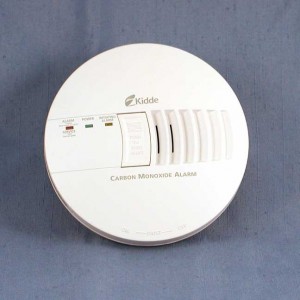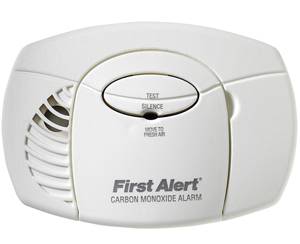
As has already been described, there are a number of ways these detectors work. We have the simple spot style detector that will change colour when it detects the presence of carbon monoxide in the home. The other type available is an alarm type which, as is the name, will sound an alarm when gas is detected.
Spot Style
Advantages
- These are initially cheap to buy, costing only a couple of pounds each.
- They are small and therefore will not be an eyesore in the home.
- They are very simple to use. You simply stick them in the desired place and they are working immediately.
- Easy to see if there is a problem – The spot will darken if it detects co gas.
- Being so cheap, small and indiscreet you can therefore stick afew around your home.
Disadvantages
- As it only changes colour when it detects carbon monoxide you will have to remember to look at it daily.
- If your appliance goes particularly wrong over night you won’t be there to view the colour change and we know poisoning can kill in 3 minutes.
- It maybe cheap but one will only last 3 months and after 2 or 3 years you will have paid for an alarm type.
Overall, probably good for a very quick fix until you get an alarm. However, they are potentially very dangerous because the toxic gas can kill in minutes. If you have nothing in your home, stick one of these up until you can get a different style one.
Mains Operated
Advantages
- Alarm sounds when carbon monoxide is detected.
- No battery required.
- Once fitted the first time, easy to change.
- Last between 5 and 8 years depending on the model.
- Probably the most reliable detector. Some can be wired to be plugged into a socket.
- Most update every 15 to 30 seconds so problems will be picked up quickly.
Disadvantages
- More expensive to buy than the battery operated kind.
- Needs to be wired into the main requiring further time and expense.
Overall, much better than a spot detector as it will alert as soon as there is a problem. Last a 
Battery Operated
Advantages
- Alert sounds when CO is detected.
- Most update every 15 to 30 seconds so problems will be picked up quickly.
- Battery life of around 6 years.
- Some will last up to 10 years before needing a change.
- Easy to fit depending on the make. Some can just sit on a shelf so can be unobtrusive.
Disadvantages
- Need to remember to change it over 6 or 10 years depending on the make.
- Can give false readings.
- Some brands may use up more battterys than others and these need to be checked.
Overall, will protect you more than a spot detector and will give you an instant alert should there be a problem with an appliance. The decision between having hard wired or battery will be dependent on the individual.
Whichever type of detector you choose, ensure you buy one for your home. There are deaths from carbon monoxide every year and having a detector in your home will protect you from this deadly poison.






